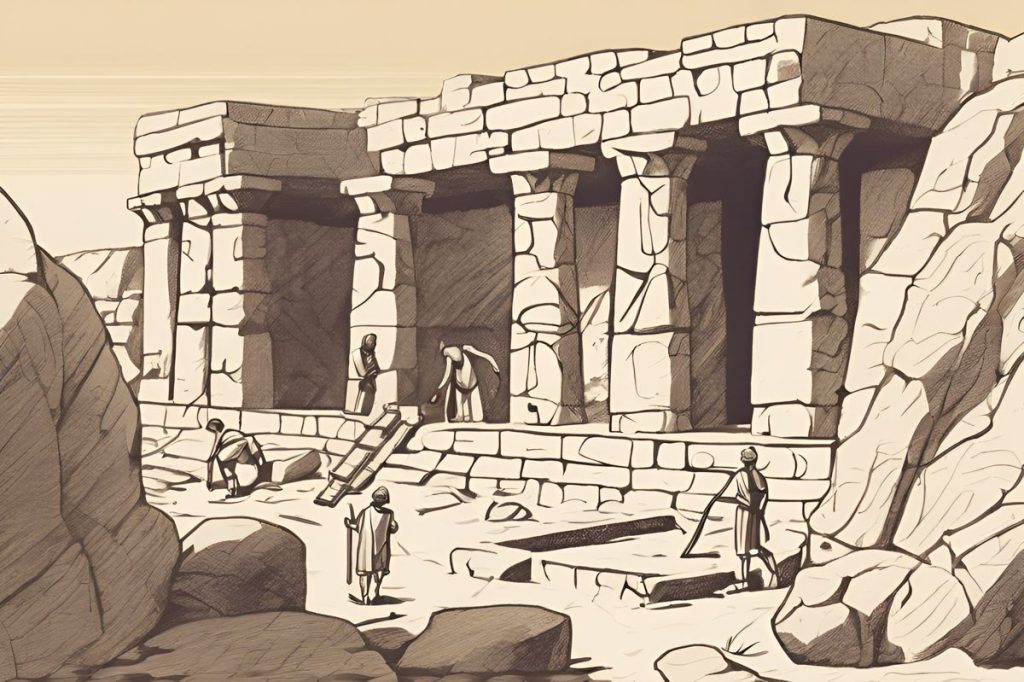A team from the University of Leicester has rediscovered 46 ancient sites at the Dhekelia British military base in Cyprus, spanning the Bronze Age to Roman eras. The survey also revealed three coastal quarries, providing insights into ancient trade and infrastructure.
How many ancient sites were rediscovered at the Dhekelia British military base in Cyprus?
A team from the University of Leicester has rediscovered 46 ancient sites at the Dhekelia British military base in Cyprus, spanning the Bronze Age to Roman eras. The survey also revealed three coastal quarries, providing insights into ancient trade and infrastructure.
A Glimpse into the Past
Recent efforts by a team from the University of Leicester have led to the remarkable rediscovery of 46 ancient sites at the Dhekelia British military base in Cyprus. This breakthrough spans multiple historical periods, showcasing remnants from the Bronze Age, Byzantine, Hellenistic, and Roman eras. The initial documentation of these sites dates back to the early 1960s, a time before the establishment of the garrison at the base and Kingsfield airstrip. The university’s goal was to relocate around 60 potential archaeological sites, a task made challenging due to decades of changes and developments in the area.
The technique employed was a “walkover survey,” a methodical process involving measured intervals of observation and recording by the archaeologists. This meticulous approach has led to the identification of 51 sites, of which five are historic buildings. The team, led by archaeologist Matt Beamish, encountered difficulties with outdated mappings and incomplete archival records. However, they remained undeterred, and their persistence paid off, uncovering a significant chapter of Cyprus’s historical narrative.
Unveiling Hidden Heritage
The survey not only rediscovered lost sites but also unearthed three coastal quarries. These quarries provided a window into the past, revealing ancient stone extraction methods and facilities for loading boats. Such discoveries are invaluable, as they offer insights into the trade and infrastructure of past civilizations that inhabited the island.
The data compiled from this survey is far from just academic. It has been integrated into the Historic Buildings, Sites, and Monuments Record managed by the Defence Infrastructure Organisation (DIO). This integration is critical for the protection and management of heritage assets, ensuring that the rich history embedded within the UK’s defence estates is preserved for future generations.
Technological Advancements in Archaeology
With the progression in remote sensing technologies, there is now the possibility to uncover more such sites that remain hidden from the naked eye. These advancements can significantly aid in the management and preservation of cultural heritage. Alex Sotheran, the DIO archaeology advisor, commended the survey as a vital step towards a deeper comprehension of Dhekelia’s archaeology. It enables more informed stewardship of the cultural assets within the military base’s vicinity.
As we continue to marry traditional archaeological methods with modern technology, we are poised to unlock further secrets from the past. This harmonious blend of the old and the new is shaping up to be a cornerstone in the quest to preserve human history. It is a testament to our relentless pursuit of knowledge and our commitment to safeguarding our collective heritage.
How many ancient sites were rediscovered at the Dhekelia British military base in Cyprus?
A team from the University of Leicester has rediscovered 46 ancient sites at the Dhekelia British military base in Cyprus, spanning the Bronze Age to Roman eras. The survey also revealed three coastal quarries, providing insights into ancient trade and infrastructure.
What historical periods do the rediscovered sites at the Dhekelia British military base in Cyprus span?
The rediscovered sites at the Dhekelia British military base in Cyprus span multiple historical periods, including the Bronze Age, Byzantine, Hellenistic, and Roman eras.
What method was employed to rediscover the ancient sites at the Dhekelia British military base in Cyprus?
The method employed was a “walkover survey,” which involved systematic observation and recording by archaeologists at measured intervals. This meticulous approach led to the identification of 51 sites, including five historic buildings.
How has the data from the survey been utilized for the preservation of heritage assets?
The data compiled from the survey has been integrated into the Historic Buildings, Sites, and Monuments Record managed by the Defence Infrastructure Organisation (DIO). This integration is crucial for the protection and management of heritage assets, ensuring that the rich history embedded within the UK’s defence estates is preserved for future generations.

